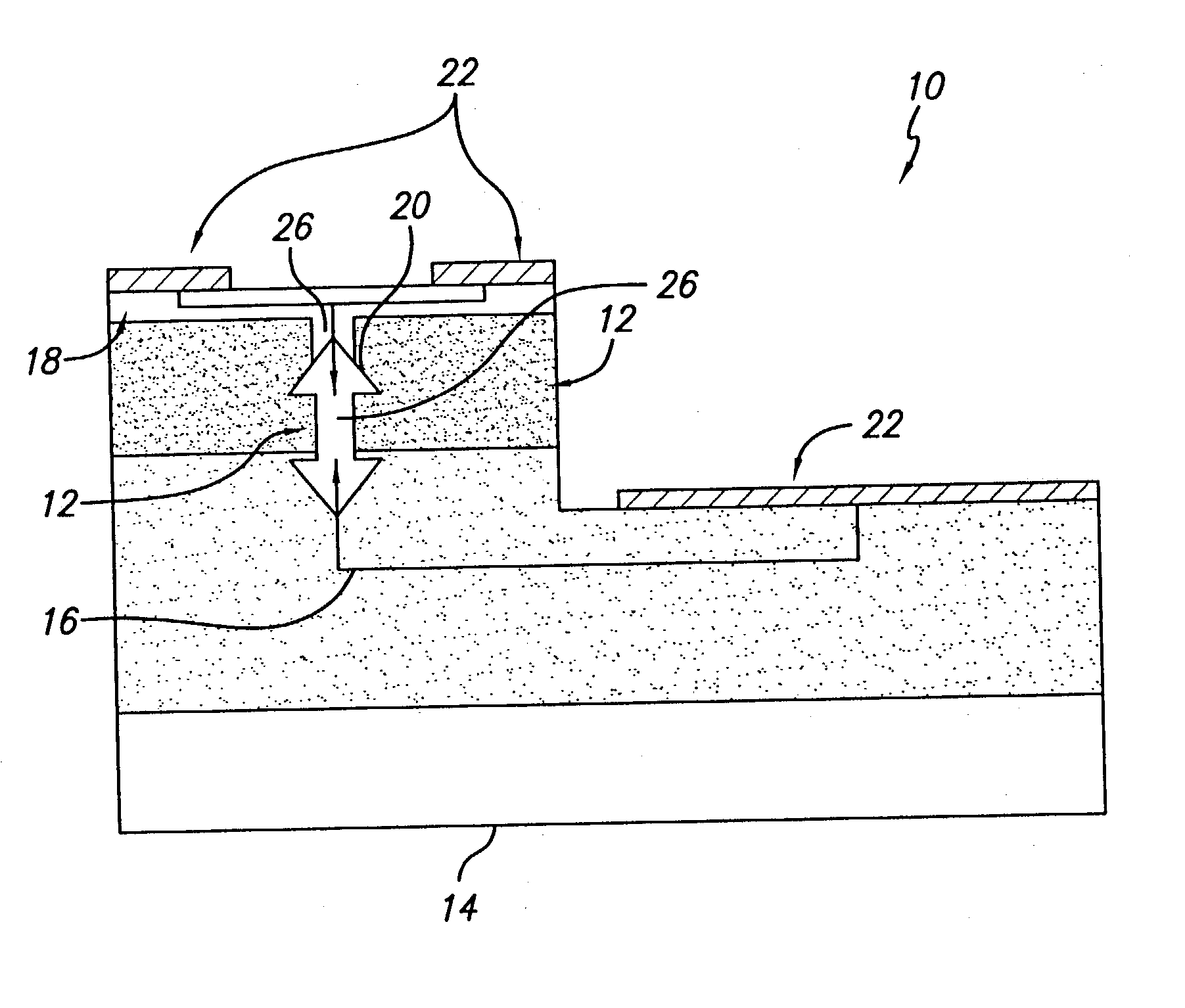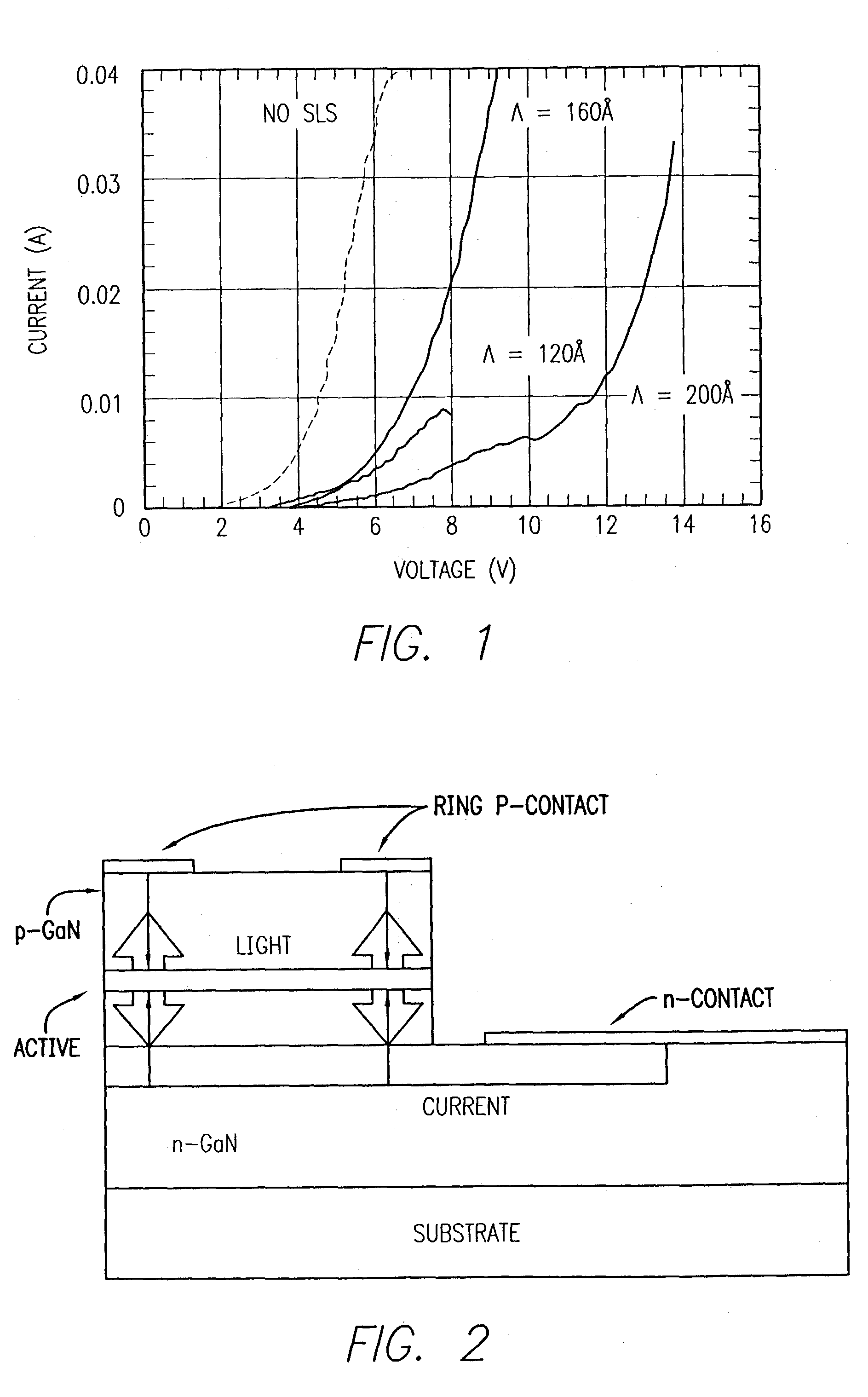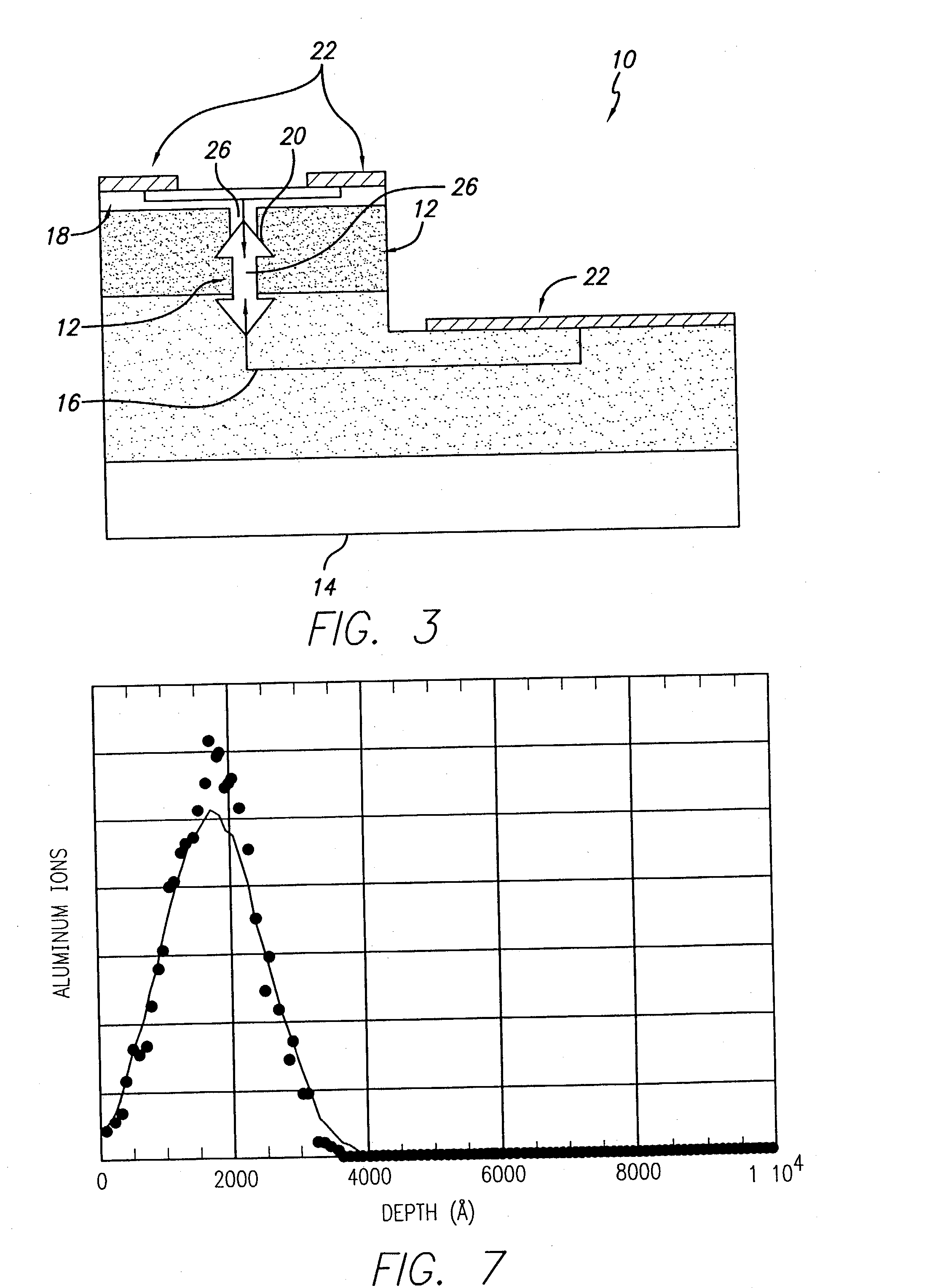Implantation for current confinement in nitride-based vertical optoelectronics
a technology of current confinement and vertical optoelectronics, which is applied in the direction of semiconductor lasers, semiconductor laser structural details, lasers, etc., to achieve the effect of reducing light absorption
- Summary
- Abstract
- Description
- Claims
- Application Information
AI Technical Summary
Benefits of technology
Problems solved by technology
Method used
Image
Examples
Embodiment Construction
[0057] An LED structure with a 5000 .ANG. thick p-doped GaN top layer was implanted for current confinement.
[0058] (1) Using TRIM, for an aluminum species, an energy of 180 keV was chosen to disorder at least 1600 .ANG. of material (straggle and channeling in GaN will most likely increase this depth). The chosen dosage was 10.sup.14 cm.sup.-2.
[0059] (2) The sample was patterned with an alignment pattern made out of dielectric material (to survive the regrowth process; alternately, a refractory metal could be used).
[0060] (3) A 200 .ANG. / 2000 .ANG. Ti / Au mask was deposited using a liftoff process to serve as the implant mask. The titanium served as a metal-to-semiconductor sticking layer, and the gold thickness was chosen to exceed the penetration depth of 180 keV Al into Au calculated by TRIM simulations.
[0061] (4) The sample was then implanted at the above conditions.
[0062] (5) The metal mask was etched away (Au etchant and BHF).
[0063] (6) A 1200 .ANG. p-doped (Mg) GaN layer was re...
PUM
 Login to View More
Login to View More Abstract
Description
Claims
Application Information
 Login to View More
Login to View More - R&D
- Intellectual Property
- Life Sciences
- Materials
- Tech Scout
- Unparalleled Data Quality
- Higher Quality Content
- 60% Fewer Hallucinations
Browse by: Latest US Patents, China's latest patents, Technical Efficacy Thesaurus, Application Domain, Technology Topic, Popular Technical Reports.
© 2025 PatSnap. All rights reserved.Legal|Privacy policy|Modern Slavery Act Transparency Statement|Sitemap|About US| Contact US: help@patsnap.com



